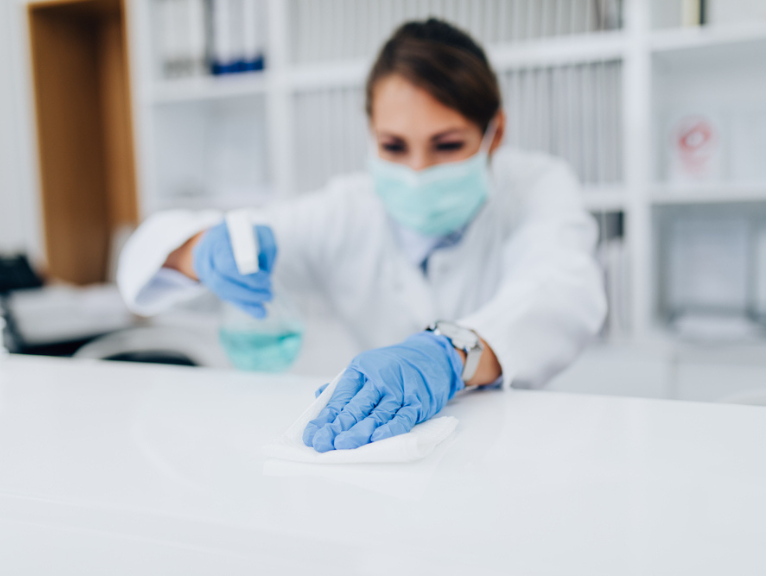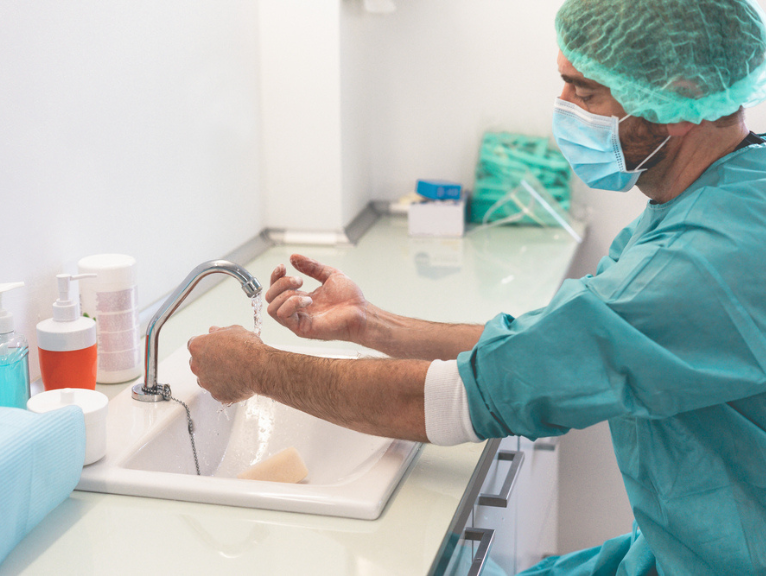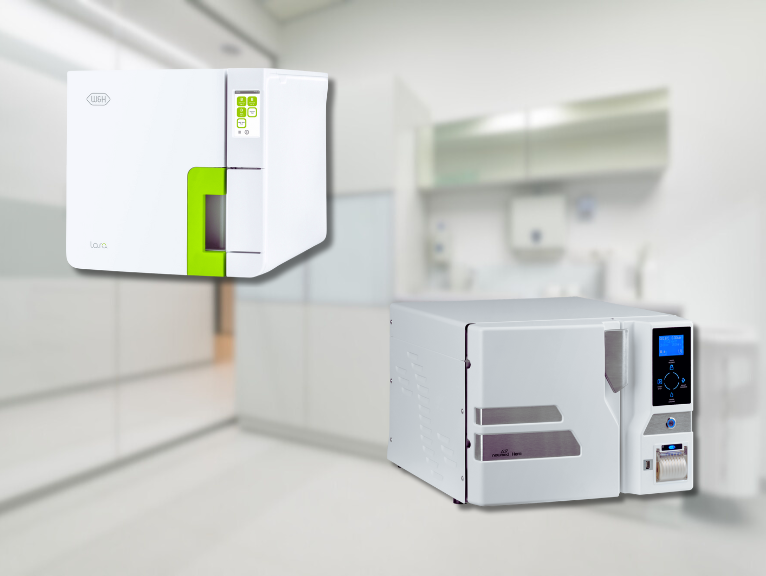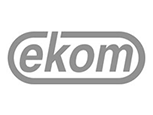
20th May 2024
How Dental Practice Design Can Minimise Infection Risk
As any dentist knows, ensuring that your practice is free from infection is paramount. For laypeople, infection risk is often associated with larger medical procedures and surgery, but failing to take proper measures in dental environments can have severe consequences.
Dental infections can lead to abscesses, gum disease and, in severe cases, even life-threatening sepsis. It’s imperative, then, that dental practices ensure every possible step is taken to minimise the risk of infection throughout the premises.
So, how can you optimise your dental practice design to minimise infection risk? We think four key areas can’t be neglected when considering this.
1. Optimise Your Practice’s Layout for Efficiency and Cleanliness
Most dental practices are busy, bustling environments with staff, patients, and others coming and going. This leads to certain unavoidable levels of infection risk as people may be suffering from unknown illnesses or inadvertently carrying bacteria on their clothes, for example.
Ensuring that your premises are laid out in a way that maximises space, minimises obstruction, and allows people to maintain distance between themselves is crucial when considering how a dental practice design can minimise infection risk. Here’s how you can achieve this:
Separate Patient Flow:
Design the layout to guide patients through a logical flow from waiting areas to treatment rooms and recovery or exit. This helps to prevent congestion and minimises interaction between patients.
Treatment Room Configuration:
Try to arrange your treatment rooms to optimise workflow, with consideration given to the easy access of instruments, equipment, and supplies. By ensuring there’s ample space for the dental team to move around comfortably, you reduce the chances of contamination.
Accessible Cleaning Areas:
Include designated areas for cleaning and disinfecting instruments, equipment, and surfaces. Avoid ‘doubling up’ these spaces with other purposes, as this can increase infection risk. These areas should be easily accessible and equipped with all necessary cleaning supplies.
2. Make Use of Non-Porous Materials
Porous materials, in any context, can be a haven for bacteria. Porous surfaces allow bacteria, viruses, and other contaminants to disappear into the material. There, they can remain and present a significant infection risk. Avoiding such materials is an excellent step when designing a dental practice to minimise infection risk.
For Surfaces:
Choose materials like stainless steel, quartz, or other solid surfaces. Avoid materials like wood or laminate, as these can harbour bacteria and are difficult to disinfect effectively.
For Flooring:
Opt for seamless flooring materials like epoxy or vinyl that can be easily cleaned and sanitised. Avoid carpeting or rough-textured flooring that can trap dirt or pathogens.
3. Implement Proper Ventilation Systems
Many pathogens, viruses, and bacteria can be transferred through airborne methods. Coughs, sneezes, and even talking can transmit potentially harmful contaminants in your practice.
The dental staff will naturally wear proper PPE throughout the procedure, minimising risk. However, how can you reduce the risk of airborne infections throughout the practice?
Consider Air Exchange Rates
Calculate the appropriate air exchange rates for different practice areas, including treatment rooms, waiting areas, and sterilisation areas. Aim for a higher rate of air changes per hour in treatment rooms to minimise the concentration of airborne contaminants.
Use HEPA Filtration
Installing HEPA filters in HVAC systems to capture airborne particles can significantly reduce the occurrences of bacteria and viruses. Regularly replace filters according to manufacturer recommendations to maintain effectiveness.
4. Promote Hand Hygiene
Hand hygiene is crucial in managing infection control in all aspects of life. In fact, since the COVID-19 pandemic, the average number of infections has been massively reduced, potentially due to the rise in effective handwashing that occurred during that period.
Ideally, dental staff will already have excellent hand hygiene, but ensuring this is spread throughout your clients and patients may be more complex. So, how can your dental practice design prioritise handwashing to minimise infection risk?
Handwashing Stations
Install handwashing stations with touchless taps and antibacterial soap dispensers in strategic locations. These should be in reception areas, treatment rooms, and staff areas like changing rooms and break rooms.
Sanitiser Dispensers
Supplement handwashing stations with hand sanitiser dispensers at entrances, reception desks, and other high-traffic areas. Alcohol-based sanitisers should be used with at least 60% alcohol for the most effective disinfection.
Educational Signage
Display clear and consistent signage reminding patients and staff of proper hand hygiene practices, including when and how to wash or sanitise hands. Reinforce the importance of hand hygiene in preventing the spread of infections.

5. Utilise Effective Sterilizers
The proper use of sterilisers is irreplaceable when it comes to infection control. Not only can they help ensure patient safety, but they also support maintaining high hygiene standards. Advanced sterilisation systems effectively eliminate bacteria, viruses, and other pathogens from dental instruments, which is crucial given these tools’ close and frequent contact with patients.
Newmed QuickSteam™
Sterilisers that operate with rapid cycle times and advanced tech, like Newmed’s QuickSteam™, significantly reduce the turnaround time for sterilising instruments. This means dental practices can maintain a continuous flow of sterilized equipment, minimising the risk of cross-contamination between patients. It doesn’t compromise safety and is effective at sterilising solid, hollow, wrapped, or porous materials.
The W&H Range
The W&H range offers a reliable and easily maintained solution when optimising your dental practice to minimise infection control. The Lisa model uses Eco Dry tech for efficient B-cycle steam sterilisation and an intuitive touchscreen interface. You can even monitor your steriliser using the Lisa Mobile App!

Left: W&H Sterilizer Right: NewMed’s QuickSteam™
Looking for Expert, Bespoke Dental Practice Design?
At Curran Dental, we draw on over two decades of experience designing and building dental practices. Our designers, tradespeople, and tech specialists come together to give you the perfect combination for your dental practice project.
Thanks to our rich heritage in dental design, we understand that your practice needs to look and feel modern and professional without sacrificing practicality and safety. That’s why we offer a wide range of equipment to keep your business running efficiently and deliver your patients the best possible treatment.
We offer flexible payment options, too. This is designed to make upgrading your practice’s time and budget commitments manageable and accessible. If you want to find out more about our finance options, click here or feel free to call us on 02380 696750 for a more detailed conversation. You can also get in touch with us through our website.










